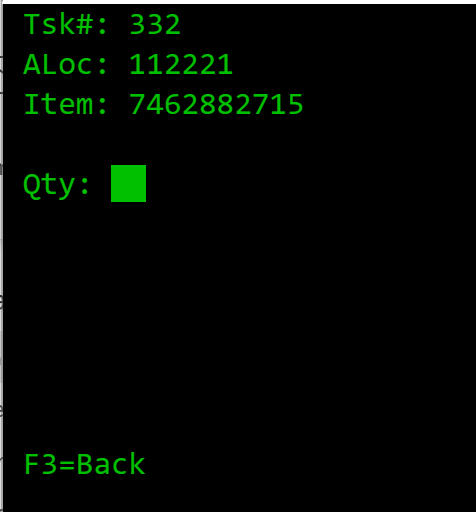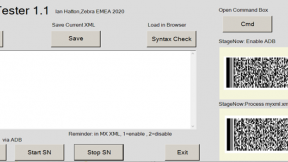Getting into the WMS Business without “Getting into the WMS Business”
I know what you are thinking; What does it mean to do something without doing that thing? We’ll get there soon enough.

As a former Supply Chain Consultant, I have seen many different Warehouse Management Systems. Some have been very old, some newer, some have been very easy to work with and some have been a complete nightmare. At the end of the day, I think we can all agree that developing a WMS is no easy feat, and unless you have the necessary resources to research, design, develop, support and continue to improve your solution, you probably shouldn’t do it.
Many Fortune 500 Supply Chain companies have crunched the numbers and determined that writing a homegrown solution is just plain cost-prohibited, especially when they consider the on-going cost of supporting these solutions.
Some of the most popular solutions out there are still using telnet-based “green screen” interfaces. This may be the prime reason that companies look to change solutions. So why aren’t more companies making the change?
Many legacy WMS solutions are still in use within the supply chain because:
- Their solution has been designed or customized for that users’ specific business needs
- They have invested a great deal of time and money in the solution and cannot rationalize the huge cost to change
- The ROI doesn’t justify the cost to invest in a new solution, not to mention the disruption in operations, accounting, etc.
Back to my mindreading. I just told you to “get into the WMS business” and now I am discouraging you from developing a WMS Solution of your own. It must seem a little contrary, right? Wrong. I’ll clarify.
Writing your own WMS is expensive, but you don’t need to develop your own solution to “get into the WMS business”. Perhaps a better option would be to improve an existing solution, without making changes to the back-end system and the best place to start is their telnet user interface.
Why Telnet?

Terminal Emulation(telnet) is a character-based technology that has existed for over 50 years (Fig A). The interface was originally designed to run on a “dumb terminal”. connecting to mainframes and minicomputers. When both wired and wireless ethernet were invented, dumb terminals became obsolete, but the applications these terminals ran continued to be useful on both PC workstations and mobile devices.
The various telnet protocols (IBM 5250/3270, VT100, etc.) correspond to models of the dumb terminal models, hence the name “Terminal Emulation”. The benefit to using TE is the ease of customization to an application. Telnet is free form client, so typical changes need only made on the backend.
Green Screen applications have had a great deal of success, but the interface has become “tired” and doesn’t reflect a modern look. It doesn’t allow for much in the way of design, color or ease of use. This is your opportunity.
Modernization, Added Features and Improved Processes
Using Zebra’s All-Touch Terminal Emulation client (powered by Ivanti), Zebra VARs and end users have the ability to modify the client side of the emulation based solution, designing an interface that modernizes the screens their users see, withing making changes to the backend system using free tools.
As an example, a picker app in a warehouse, can go from Fig B to Fig C, giving users an easier interface to follow, accellerating the training process, offering product photographs being pulled from a different source (perhaps a website with corresponding SKUs) and doing things to streamline the data entry process, like buttons that acknowlege the full quantity required for that transaction along with short pick options, so keyboards are used less often and only in exceptions:


(Fig B) (Fig C)
Lucrative Services – While Saving Client Money
By offering “Modernization”, partners can generate significant professional services and save their clients potentially hundreds of thousands of dollars in WMS modifications and upgrades. Designing new screens can be done by Systems Engineers or developers without having to write code. Projects like this can range in delivery timelines from a few days to several months, depending on the complexity of the project scope- with zero disruption of business.
The beauty of this work is that it can be done without changes to the WMS whatsoever.
The ROI of these projects can be measured by several factors:
- Do the changes add any functionality to improve the way a warehouse worker does their job?
- Do the changes streamline process workflow?
- Do the modernized screens speed up the onboarding process for new or temporary workers?
- Do the changes make a workers’ efforts more efficient or accurate?
By pitching modernization, VARs can show their clients better reasons for transitioning from Windows Embedded/CE to Android measured in worker productivity.
If changes can impact all or any of the above factors, the work will clearly save customers money and will ultimately ensure that the relationship between the end user and their partner is cemented for years to come as a trusted advisor.
So, it really is possible to be in the WMS business without selling/building a WMS.
Have an opportunity? Need some help? Message me.

Brian Munroe




